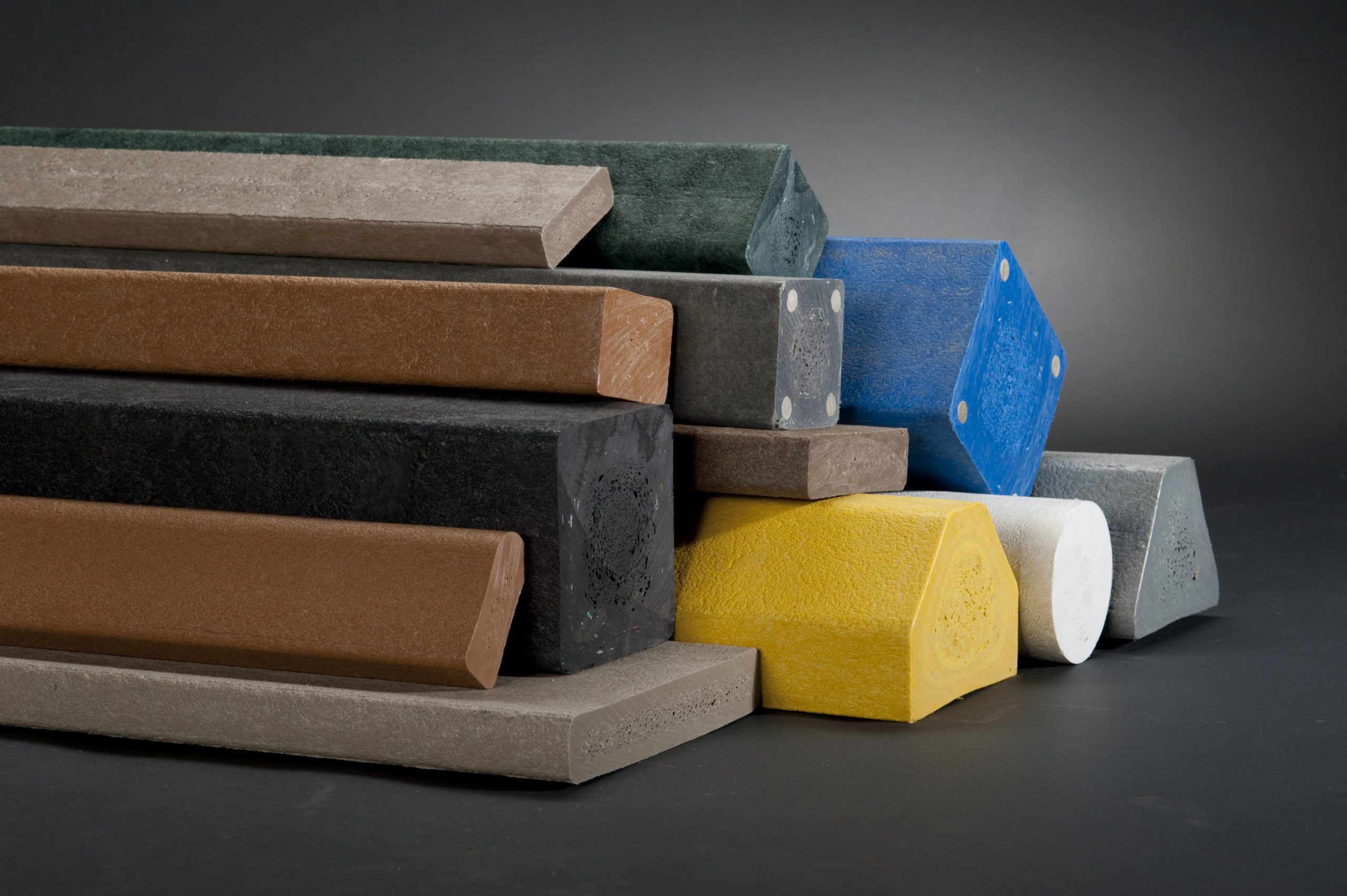Composites: The Future of Lasting Building Materials
Composites: The Future of Lasting Building Materials
Blog Article
Opening the Ecological Benefits of Recycled Compounds in Construction and Style
In the realm of building and layout, the utilization of recycled compounds holds substantial promise for improving sustainability techniques and reducing environmental impact (composites). By incorporating these innovative materials, there is a potential to address important concerns such as waste reduction, power preservation, and a decline in carbon impact. The change towards a much more lasting future in these sectors depends upon opening the full possibility of recycled composites. This discussion will certainly discover the diverse benefits and difficulties related to incorporating recycled composites into building and style, offering a look into the transformative possibilities that exist ahead.

Environmental Impact Decrease
The decrease of ecological impact via using recycled composites in building and layout plays an essential role in sustainable methods. By incorporating recycled compounds right into building materials, the building industry can considerably decrease its carbon impact and contribute to a more environment-friendly future. These lasting products, made from repurposed plastics, wood fibers, or various other recycled aspects, offer a sensible alternative to typical building products without endangering on top quality or longevity.
Recycled compounds help divert waste from garbage dumps and reduce the need for extracting basic materials, therefore conserving natural deposits. Furthermore, the production process of these composites often eats much less power and produces fewer greenhouse gases contrasted to generating virgin products (composites). This change in the direction of utilizing recycled compounds not just reduces environmental harm yet additionally promotes a circular economy by urging the reuse of products that would otherwise be disposed of
Waste Minimization
With a concentrate on decreasing waste in building and construction and design, the assimilation of recycled composites offers a lasting remedy to lower ecological influence. Waste minimization is a crucial element of lasting techniques, and making use of recycled compounds offers a possibility to achieve this objective successfully. By making use of products that have actually already offered their first purpose, such as recycled plastics or reclaimed timber fibers, the building and construction and style industries can considerably lower the quantity of waste produced and sent to landfills.
Recycled compounds have the possible to divert substantial amounts of waste from conventional disposal approaches, adding to an extra circular economic situation where sources are used effectively. Additionally, the production process of recycled compounds often takes in much less energy and creates less discharges contrasted to virgin materials, further minimizing the environmental footprint of construction and style jobs.
Carrying out waste reduction approaches through the consolidation of recycled compounds not only aids in preserving natural deposits but also advertises a much more lasting technique to building and developing for a greener future.
Power Preservation
Integrating recycled compounds not only minimizes waste in building and design but also plays an essential function in enhancing energy conservation methods within the market. The usage of recycled compounds in construction can substantially add to power preservation with various means. By promoting the usage of recycled composites in building and construction and layout, the sector can make substantial strides in the direction of attaining power effectiveness and pop over here minimizing its carbon footprint, eventually contributing to a more lasting constructed atmosphere.
Carbon Footprint Decrease
Enhancing sustainability techniques with the use of recycled compounds in building and style dramatically minimizes the carbon impact of the market. By including recycled products right into the production of compounds, the requirement for virgin resources lowers, causing lower power usage and greenhouse gas discharges connected with standard production procedures. This decrease in carbon footprint is vital in combating environment adjustment and promoting a more eco-friendly approach to construction and style.
The carbon footprint decrease accomplished via the adoption of recycled composites lines up with the worldwide push in the direction of lasting practices and the decrease check over here of industrial discharges. Inevitably, by focusing on the assimilation of recycled compounds, the sector can make substantial strides in decreasing its carbon impact and contributing to a more sustainable future.
Sustainable Future
The assimilation of recycled composites in building and style not just addresses instant environmental concerns but likewise lays a solid structure for a sustainable future in the market. By incorporating recycled composites right into building products and items, the building and construction and design sectors can dramatically reduce their dependence on virgin resources, resulting in an extra circular economic situation. This shift in the direction of sustainability is essential for minimizing the ecological effect of conventional building techniques, which commonly result in high levels of waste generation and source depletion.

Final Thought
Finally, recycled compounds provide considerable ecological advantages in building and design by minimizing environmental effect, reducing waste, saving energy, decreasing carbon footprint, and promoting a sustainable future. Embracing using recycled composites can add to an extra environmentally-friendly strategy More hints to structure and style, eventually causing an extra lasting and greener future for all.
The reduction of environmental impact via the use of recycled composites in construction and layout plays an important duty in lasting methods.With a focus on minimizing waste in construction and layout, the combination of recycled composites offers a lasting option to reduce ecological impact. By advertising the usage of recycled compounds in construction and style, the sector can make substantial strides towards accomplishing power effectiveness and decreasing its carbon impact, eventually adding to a much more lasting constructed atmosphere.

Report this page